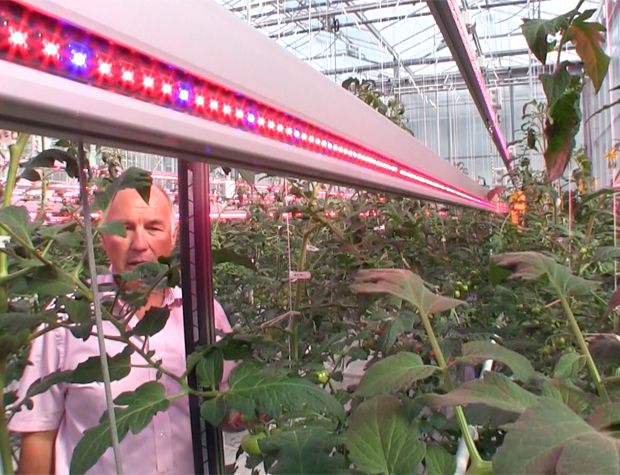Hacking Tomatoes at the World’s Greenest Greenhouse
A Dutch experimental growing facility tests the brightest new ideas in agricultural efficiency

The Netherlands has nearly 11 thousand hectares of growing space under glass, or about 40 square miles. That’s almost twice the area of the island of Manhattan. In fact, no country has a greater proportion of its land area under glass.
But these greenhouses boast more than plants. They’re also a breeding ground for high-tech plant experiments and greener energy. Some of the country’s most advanced greenhouses are in Bleiswijk and operated by Wageningen University and Research Center. At the Wageningen greenhouses, researchers can grow as many as 150 pounds of tomatoes in a square yard of space. And by using specially calibrated LED lights, they have managed to produce exotic new tomatoes with a whopping 50 percent more vitamin C than ordinary ones.
Transcript:
Glenn Zorpette: The Netherlands is the home of the biggest and most advanced greenhouses. Here, in Bleiswijk, is one of the greenest greenhouses in the world. And it’s also the home of the first LED-hacked tomato.
Hacking a fruit—or a vegetable—is all about control. Instead of being subject to the whims of nature, this tomato is raised on technology. The plants’ three food groups—light, carbon dioxide, and nutrients—are all based on cutting-edge research.
Sjaak Bakker: We try on to increase the productivity of the plants by modifying the environmental conditions, or the irrigation, or the proper nutrient solution, so that you have more products at the same amount of input.
Glenn Zorpette: The three-pronged tomato hack starts with light, or more specifically, with LEDs.
Tom Dueck: Vegetables, they need the light to put enough sugars into their fruits, whether it be a tomato or a cucumber. You can use different colors: red and blue and far red. You can influence the size, the height of the plant. You can influence the color of your plant. Certain amounts of lights will induce darker colors in your the leaves. Those kinds of aspects you can easily produce if you know what you’re looking for.
Sunlight has about 27 percent blue light. Right now we’re using LEDs with approximately 95 percent red and 5 percent blue. And so during the day the tomato has enough blue light. And during the night hours, when it’s dark, then we can use a little bit of extra blue light from the LEDs.
Glenn Zorpette: Placement of the lights is also important. As the tomato plants grow taller, the LEDs are aimed specifically at the fruit.
Tom Dueck: We’ve seen in the last year that we can increase the amount of vitamin C in the tomato fruit by concentrating the amount of red light the fruit itself receives. Not the whole plant, but just the fruit. And so if we can do that effectively, than we’ll be able to have a better quality fruit.
Glenn Zorpette: The result is a tomato with 50 percent more vitamin C than average. But plants need more than light to grow. They also need food and water. Artificial substrates, or nutrient solutions, are the next part of the hack.
Sjaak Bakker: The taste and the flavor of tomatoes largely depend on the composition of the fruit. It’s much easier to influence that by using articifial substrates, where you have the possibility of growing the plant at different nutrient levels. You make use of the water and the nutrients as much as possible. And that gives a reduction in the total amount of nutrient solution you have to apply to the plant.
Glenn Zorpette: The greenhouse also uses an innovative energy system. Wind turbines provide electricity, but so do generators, which have the added bonus of producing extra carbon dioxide for the plants.
Sjaak Bakker: It’s called cogeneration of heat and electricity. So what we do, we burn natural gas, run a generator with that. It generates electricity on the one hand, but also heat, and it also produces carbon dioxide. And these three components are used for operational control of the greenhouse. Or, if you don’t need the electricity at the same time, it’s brought into the national grid.
Glenn Zorpette: Cogeneration at Dutch greenhouses like this one provide about 10 percent of the country’s power. And though hacking a tomato might seem like a tiny advance, the technology developed in these greenhouses will help us feed the hordes of tomorrow. For IEEE Spectrum, I’m Glenn Zorpette.
Glenn Zorpette is editorial director for content development at IEEE Spectrum. A Fellow of the IEEE, he holds a bachelor's degree in electrical engineering from Brown University.